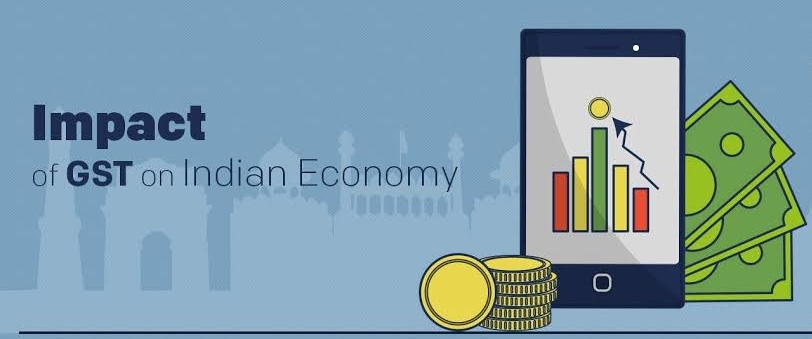GST: How has it affected the information technology industry

Implementing Goods and Services Tax was a very complex and bold decision. It was not just about how it is going to change the Indian tax system but also about the effect of GST on Indian economy that was at stake. The government has carefully taken steps to implement GST in a refined manner as much as possible. GST council formed, and it awarded the contract to build GSTN to Infosys. GSTN handles all the functions related to GST through technology. It handles the front end that is the GST portal. Issues like tax payments, GST payment information, Filing returns, information about different GST services are available on the GST portal. On the backend, GSTN handles the whole infrastructure like the security of data, efficient functioning of servers, etc. Without GSTN, GST would not be possible. The technological advancements that were available in India were put to use, and there were some innovative technologies used to make GST possible. After the implementation of GST, there was an effect on various sectors and industries, and the IT sector, too, had its share of effect.
IT sector before GST
In the previous tax system, the IT sector had different taxes levied on it. Like it was with any other industry. VAT (Value added tax) and Service tax both were levied on the sale of any packaged software. The service tax was 15%, and VAT on the sale of software was around 5%. There was an added Excise duty that applied to the manufacture of IT products. If there was any software that was built and sold through CD, then there were three taxes levied on it. VAT, Service Tax, and Excise Duty. Excise Duty was levied for the manufacturing of software. Service Tax was levied because the software can be downloaded multiple times, and that makes it a service. And VAT was applicable because of the sale of the software.
If there were a distributor or agency that would deal with the reselling of software, then there would be a “tax on tax” or cascading effect that would be levied. It would cut the profits of the distributor. The software reseller had no option other than increasing the price of the software to recover the costs. So basically, under the IT sector, those who dealt with software development and selling would have to pay different taxes. But the overall cost of tax in the earlier regime compared to the GST have its positives and negatives.
Information Technology sector can be taxed as goods as well as services.
The information technology sector can be categorized into Goods and Services separately or combined because the nature of the IT industry is different than any other sector. There is a thin line between the goods supplied and services provided in digital format. When the software manufactured as a product, it comes under Goods tax slab. But if that software has a recurring income or if it provides service, then it will come under the Services tax slab. Some software comes under both Goods and Services. For Example, if there is a software that is used for calculating GST payments and does not have a monthly subscription, then it would come under the Goods category. But If a software provided GST payment information service and charged regularly, then it would come under the services category.
Effect of GST on Information Technology
One of the significant changes the new tax regime made to the taxation of the IT industry is the removal of a single point taxation system. Earlier IT industry had a single point taxation system. With GST, there are 111 points of taxation levied. This means that while processing Goods and Services tax, the companies will have to deal with State GST, Central GST, and Inter-state GST. There are 37 jurisdictions with Center, Seven union territories, and 29 states. If multiplied, 37 jurisdictions with three GSTs would add up to 111 points of taxation. Software Companies will encounter increased compliance costs because they will have to address this taxation system.
The cascading effect is removed for the Goods related to the IT sector like any other industry. Supplies like cables, hard disks, servers, motherboards, circuits, etc. will not have any cascading effect on it. This will help the IT industry in a significant manner because the end cost of a product will become cheaper, and buying power will increase. Consumers will now have to pay only the tax on value addition and not the cascading taxes. It will help IT companies get better ROI ( Return on Investment) and also help new players to experiment and create better technologies.
However, companies might experience a slightly negative impact because of the changes in the taxes levied on the complete products. Photocopying machines, Fax machines, Printers, and ink cartridges will now be taxed at 28% instead of 18% of the previous tax regime. There is a tax increase in software services. Software service providers will have to pay 18% GST instead of the earlier 15% tax. Similarly, taxes increased from 15% to 18% on freelance services.
The companies that export services like BPO, overseas software development, and consultancies will come under 0% tax slab, and they will be able to claim credits on the input tax paid.
Conclusion
The debate about the effect of GST on Indian economy generates mixed opinions. There are different sectors of Indian industries that were affected by GST in various manners. The impact of GST on the IT sector can be said to be both positive and negative in its own way. There are some pros and cons on different levels. But the use of IT in the implementation of GST created greater efficiency for the new tax system. A taxpayer without any GST payment information can pay taxes online securely because of the integration of highly advanced technology in the GST portal. There are many issues that information technology was able to resolve and create an advanced system helping the country move towards faster development.





